Thick ice clouds covered by large ice crystals

Thick ice clouds covered by large ice crystals appear medium blue in Cloud Phase RGB.
Thick ice clouds have usually large ice crystals on their top. However, there are some exceptions when the cloud top particles are typically small. Such clouds appear light blue in Cloud Phase RGB.
In figures 1 and 2 Cloud Phase RGB is shown together with NWCSAF Cloud Effective Radius product to confirm that the medium blue clouds in Cloud Phase RGB are really covered by large ice crystals. NWCSAF Cloud Effective Radius product shows the cloud top particle size (retrieved from SEVIRI data). To make easier the comparison, only the effective radii of thick ice clouds are visualised by masking water and thin ice clouds. Take into account that the product is retrieved from SEVIRI data which has coarser spatial resolution (hence more mixed pixel) than VIIRS images, and the retrieval is based only on one microphysical channel (NIR1.6).
Figure 1 shows cloudiness of a low pressure system over Southeast Europe. Water clouds appear in yellowish and pinkish colour shades. Thick ice clouds are depicted in blue, while cirrus clouds appear in greenish shades. Land is brown, sea is black.
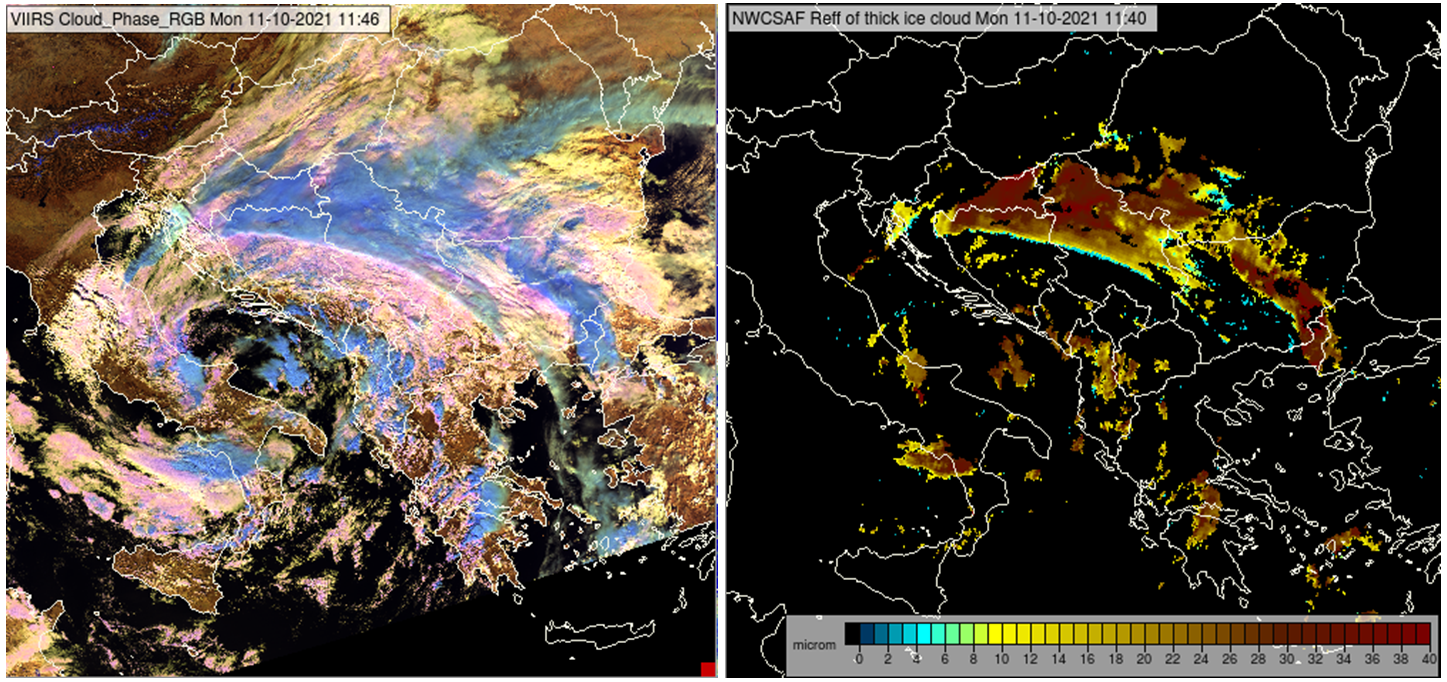
Fig. 1: Left: VIIRS Cloud Phase RGB taken on 11 October 2021 at 11:46 UTC. Right: Cloud Effective Radius of thick ice clouds (retrieved from the 11:40 UTC SEVIRI data by NWCSAF).
Figure 2 shows frontal cloudiness. Shades of purple colour in the Cloud Phase RGB indicate water clouds with extremly large droplets or mixed phase clouds.
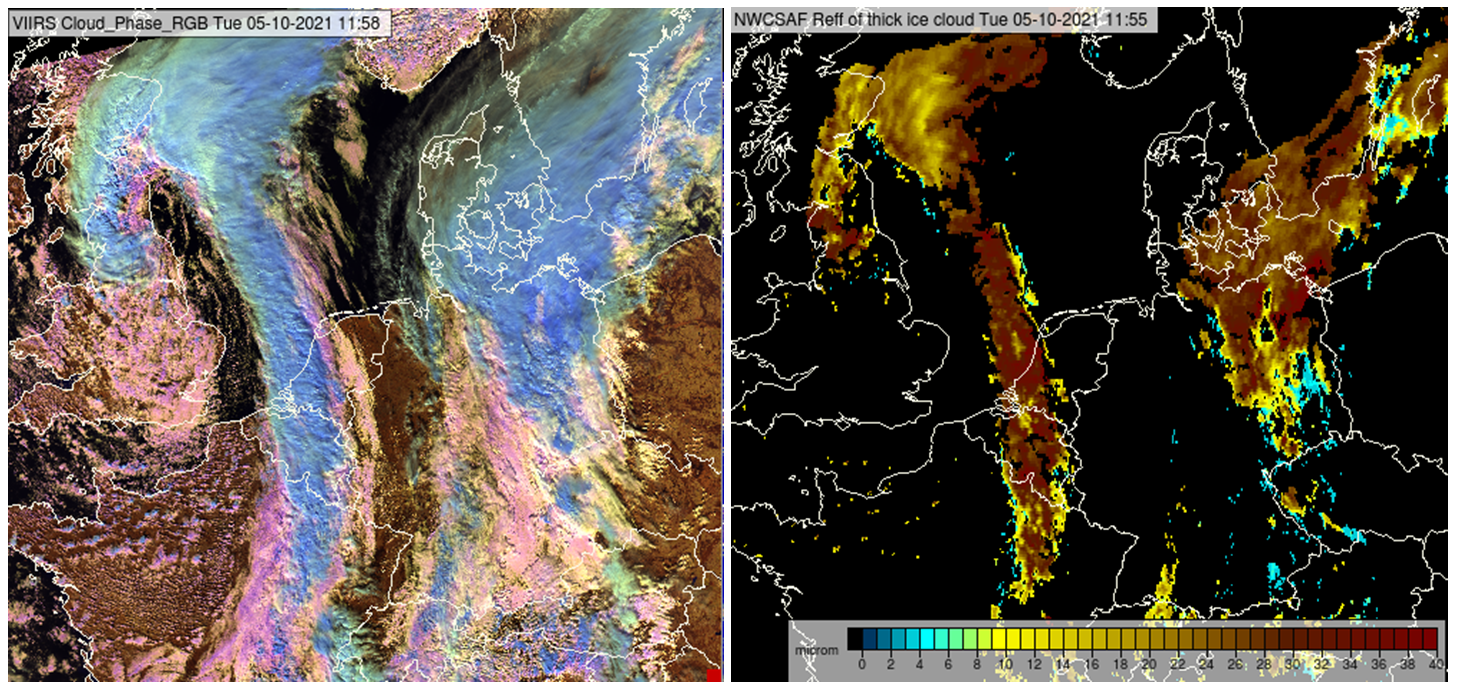
Fig. 2: Left: VIIRS Cloud Phase RGB taken on 5 October 2021 at 11:58 UTC. Right: Cloud Effective Radius of thick ice clouds (retrieved from the 11:55 UTC SEVIRI data by NWCSAF).
In figures 3 and 4 Cloud Phase RGB is shown together with Day Microphysics RGB (created with NIR1.6). Day Microphysics RGB is also sensitive to cloud top microphysics (phase and mean particle size of the cloud top elements). Thick ice clouds covered by large ice crystals appear red, thick ice clouds covered by small ice crystals appear orange. Water clouds with small droplets appear greenish, while water clouds with large droplets and mixed phase clouds are pinkish.
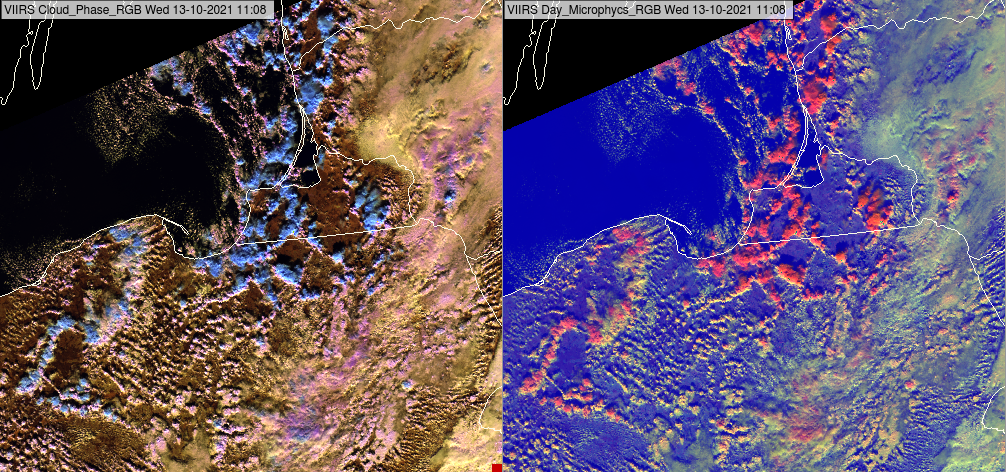
Fig. 3: VIIRS Cloud Phase RGB and Day Microphysics RGB (created with NIR1.6) taken on 13 October 2021 at 11:08 UTC.
Figure 4 shows towering cumulus clouds behind a waving front.
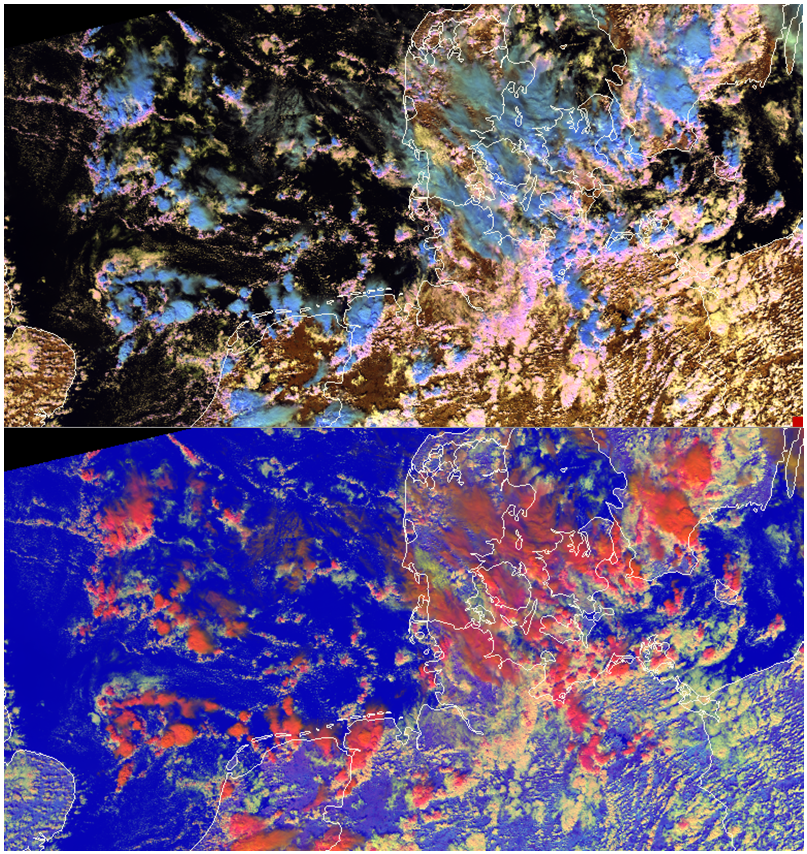
Fig. 4: VIIRS Cloud Phase RGB and Day Microphysics RGB (created with NIR1.6) taken on 13 August 2019 at 11:58 UTC.
Note that:
• The actual colour shades depend on the sun-viewing geometry as well (solar and satellite directions).
• Thick ice clouds covered by small ice crystals usually appear light blue.
Explanation of the colours of thick ice clouds covered by large ice crystals in the Cloud Phase RGB (see the recipe):
• The blue signal is large, a thick clouds have high reflectivity in the visible spectral region and it is almost independent on the cloud top microphysics.
• The 1.6 and 2.25 μm reflectivity values are usually much lower, see the graph below. After highlighting the 0-50% reflectivity range, the red and green signals will be around the half of the blue signal. (Additionally, the green signal is usually slightly stronger than the red one, since the absorption of ice at 2.25 μm is somewhat weaker than at 1.6 μm).
Therefore, thick ice clouds covered by large ice crystals appear medium blue (strong blue and medium red and green signals).
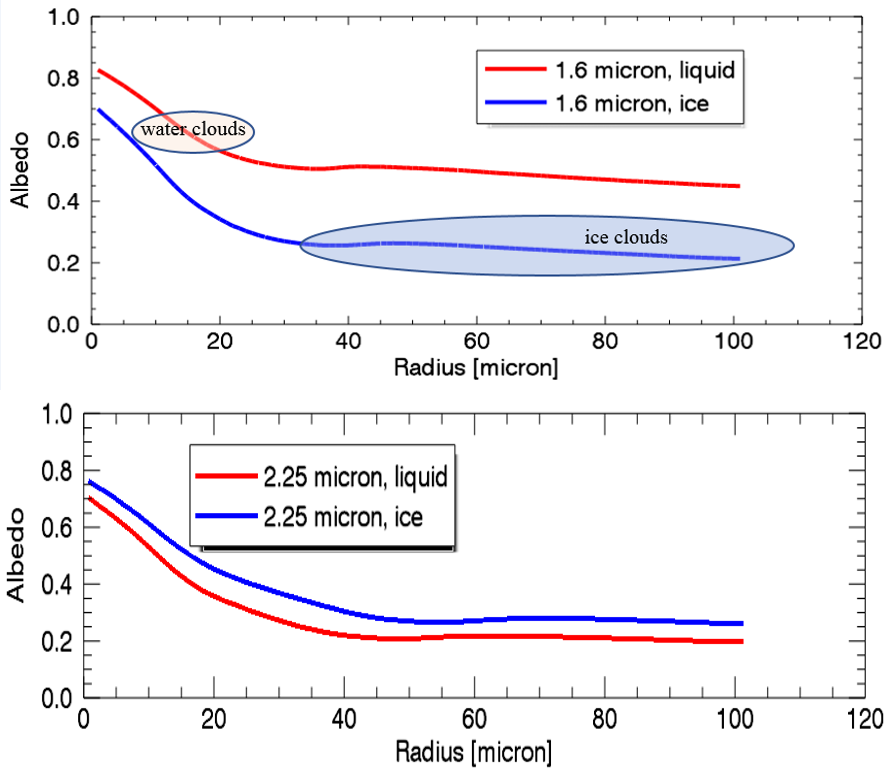
Fig. 5: Simulated reflectivity of thick ice and water clouds as function of the effective radius of the cloud top particles at 1.6 μm (up) and 2.25 μm (bottom) wavelengthes. The typical range of the cloud top particle size of water and ice clouds are indicated in the upper graph.
(Source: Ralf Bennartz, University of Wisconsin–Madison).
